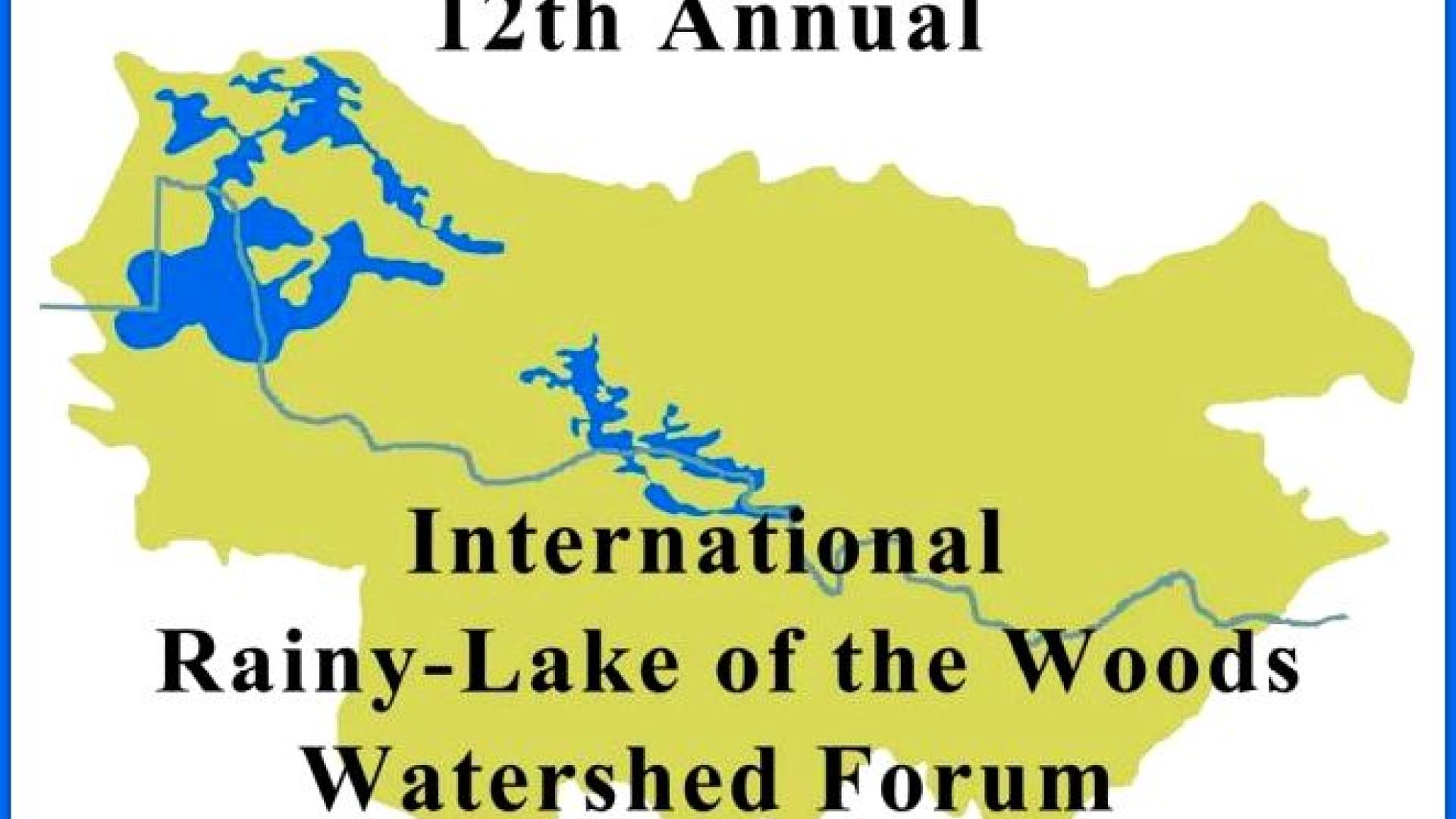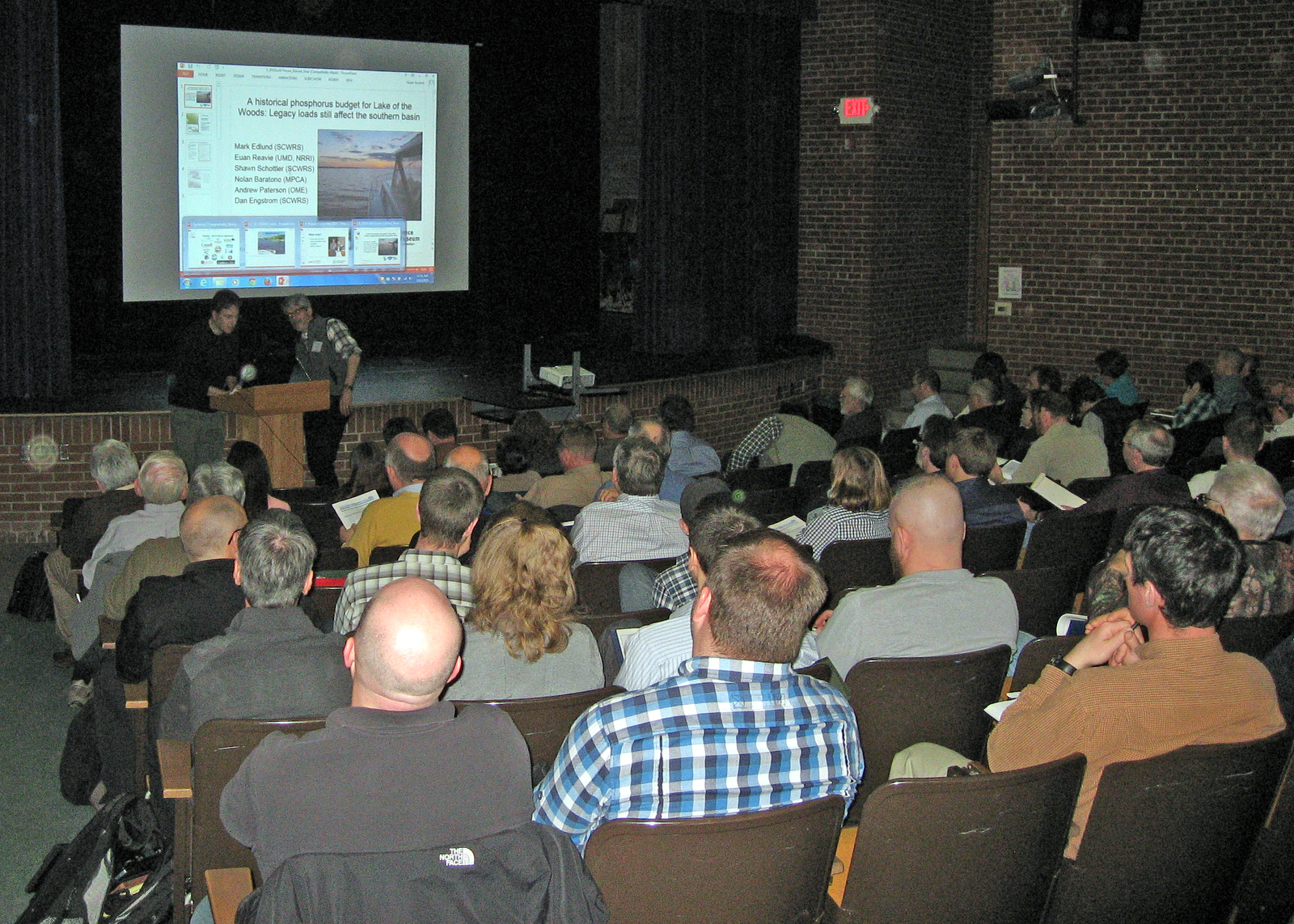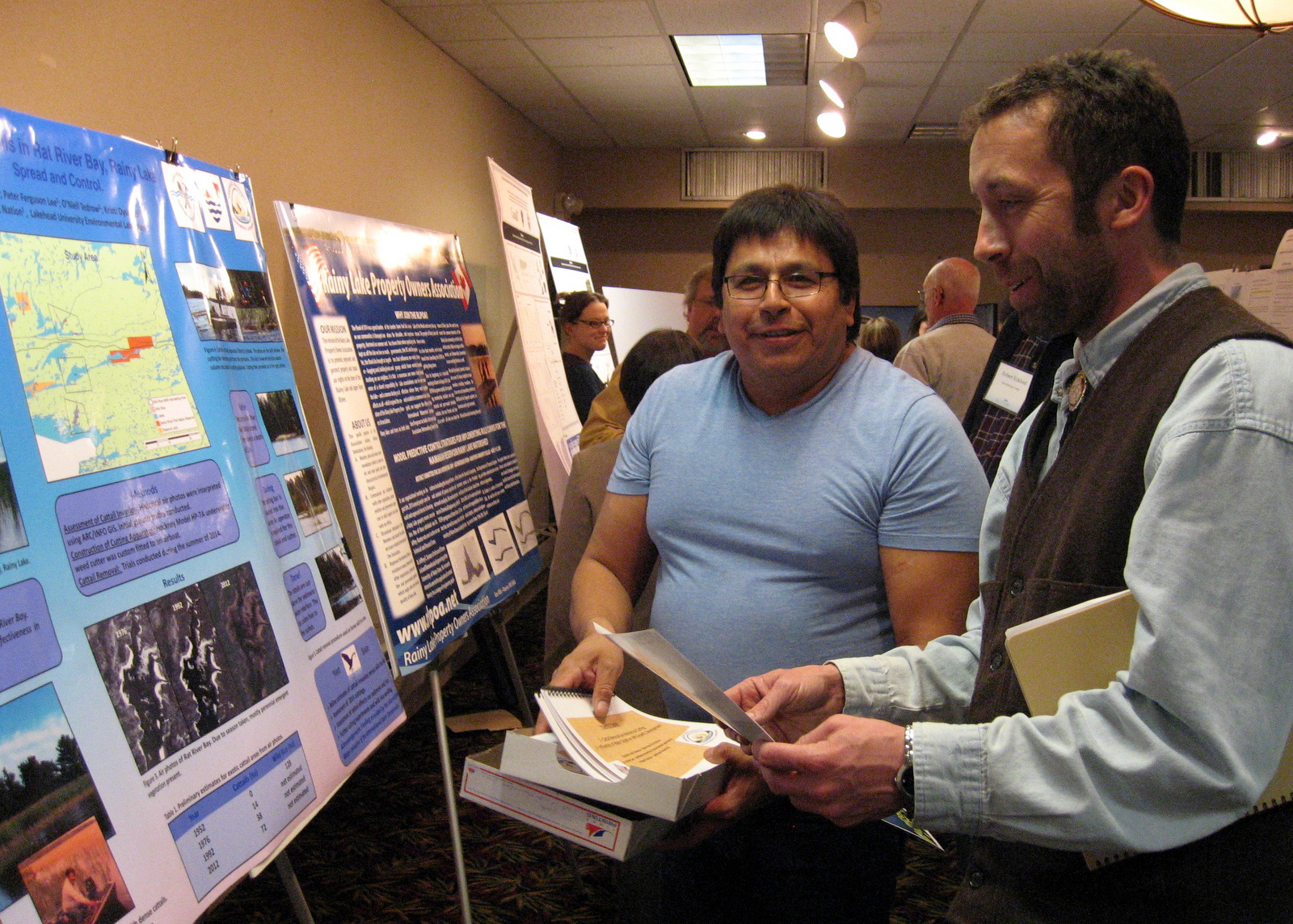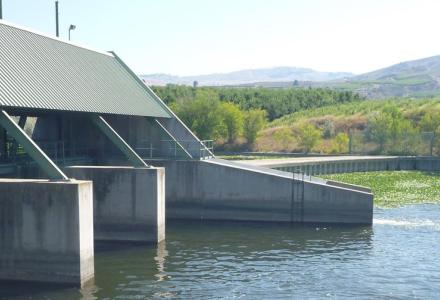
By Gail Faveri
Member, Rainy-Lake of the Woods Watershed Board
It’s been a dozen years since the first International Rainy-Lake of the Woods Watershed Forum, and the event shows no signs of slowing down. This year’s 12th annual Forum in International Falls, Minnesota, brought together a record number of attendees --- more than 150 academics, municipal, provincial state and federal agency staff, and members of the public. It was held at Rainy River Community College on March 11-12, and included 30 technical sessions and other activities.
The technical sessions had two themes: Lake of the Woods phosphorus, algae and climate change studies, and the main focus of this year’s forum, the “Effects of Artificial Lake Level Management: Multidisciplinary Preparation for a Review of the IJC 2000 Rule Curves for Rainy Lake and Namakan Reservoir.”

Rainy and Namakan lakes are each controlled by a rule curve which sets a band of levels that rises and falls according to the time of year. When the IJC established the current Rule Curves in 2000, commissioners asked that the curves be evaluated after 15 years to see if they improved matters for the fisheries without harming riparian and other economic interests. More than 20 studies are now complete or nearing completion after looking at the impacts of the rule curve on various economic and ecologic indicators.
The Forum’s first session provided updates on advances in bi-national governance from the IJC’s Water Quality Plan of Study Team, the IJC’s International Rainy-Lake of the Woods Watershed Board, and the International Multi-Agency Arrangement – a collaboration of 10 organizations cooperating on research and management activities in the basin.
The IJC recently recommended 32 projects in a Lake of the Woods Water Quality Plan of Study to the Canadian and U.S. governments.
(See a Plan of Study infographic here)
Researchers at the Forum presented information on the potential application of satellite remote sensing for water quality monitoring, what sediment cores may tell us about the phosphorus history of the lakebed, and the potential “legacy effect” of historical phosphorus loading in stimulating modern-day algal blooms.
 Mark Edlund, with St. Croix Watershed Research Station, Science Museum of Minnesota, presents “A historical phosphorus budget for Lake of the Woods: legacy loads still affect the southern basin.” Credit: Lee Grim
Mark Edlund, with St. Croix Watershed Research Station, Science Museum of Minnesota, presents “A historical phosphorus budget for Lake of the Woods: legacy loads still affect the southern basin.” Credit: Lee Grim
Other sessions focused on the impacts of water elevation management on northern pike, loons, beaver, muskrat, wild rice, property damage, lake sturgeon and contaminant flow from mine wastes. The science from these studies will be incorporated into a Shared Vision Model which will allow everyone to see the benefits and disadvantages of one water elevation management approach over another as part of the upcoming rule curve evaluation.
The Forum abstracts can be found at the Lake of the Woods Water Sustainability Foundation website.
Forum attendees also mingled at poster displays. Fifteen posters were on display, ranging from citizen participation in water monitoring data collection to cattail control to sewage lagoons.
After-dinner speakers at the forum included Brian Shipley, consul and head of Foreign Policy and Diplomacy Service with the Consulate General of Canada in Minneapolis; and John Linc Stine, the commissioner of the Minnesota Pollution Control Agency.
 John Linc Stine, with the Minnesota Pollution Control Agency, speaks to Forum attendees. Credit: LOWWSF
John Linc Stine, with the Minnesota Pollution Control Agency, speaks to Forum attendees. Credit: LOWWSF
The Forum is organized annually by a volunteer committee led by the Lake of the Woods Water Sustainability Foundation with members from universities, government agencies and non-governmental organizations active in research and resource management in the watershed.
This year’s Forum was a great success – it would not have been possible without the assistance of the following groups that helped sponsor the event:
- Lake of the Woods Water Sustainability Foundation
- International Joint Commission
- Consulate General of Canada - Minneapolis
- Voyageurs National Park
- Minnesota Pollution Control Agency
- North American Lake Management Society (NALMS)
- Dorset Environmental Sciences Centre (Ontario Ministry of Environment and Climate Change)
- Lake of the Woods District Property Owners Association
- City of Kenora
- Sioux Narrows - Nestor Falls
- Rainy River Community College
- St. Cloud State University
- Rainy Lake Conservancy
- Rainy Lake Property Owners Association
- Manitoba Conservation and Water Stewardship.
 John Kabatay (at left), with Seine River First Nation, and O'Neill Tedrow, from Lakehead University, presenting a poster on wild rice studies. Credit: LOWWSF
John Kabatay (at left), with Seine River First Nation, and O'Neill Tedrow, from Lakehead University, presenting a poster on wild rice studies. Credit: LOWWSF




